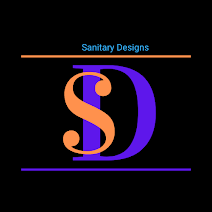Dental Waste Disposal: A Case Study in Safe and Sustainable Practice
When Dr. Sarah Whitfield opened her small dental clinic in Montgomery, Alabama, she focused on patient care bright smiles, gentle procedures, and quality service. But as her practice grew, she noticed something she hadn’t thought much about before: the amount of waste being produced every day. Used gloves, gauze, amalgam fillings, chemical containers, and sharp tools were all being discarded, often without a consistent process. That’s when she realized she needed a proper dental waste disposal system.
Realizing the Hidden Risks
At first, the clinic relied on standard medical trash bins. Staff disposed of everything from cotton rolls to used X-ray chemicals in the same containers. It seemed convenient, but it wasn’t compliant with state environmental rules.
During a local dental association meeting, Dr. Whitfield learned that improper disposal of amalgam waste, which contains mercury, could lead to contamination of soil and water. Even the disinfectant chemicals used for cleaning dental tools could be harmful if mixed with general waste. The clinic wasn’t breaking any laws intentionally, but it wasn’t following best practices either.
This realization was a turning point. The team decided it was time to make a change.
Building a Better Waste System
Dr. Whitfield partnered with a licensed waste management company that specialized in dental waste disposal. Together, they performed a full audit of the clinic’s daily operations. The audit identified four main waste categories that required separate handling: amalgam, sharps, biomedical, and chemical waste.
The company helped design a new color-coded, labeled waste system. Each waste type received its own secure container. Staff members attended short training sessions to learn proper segregation and labeling methods.
Amalgam waste was sealed in special containers for recycling under the EPA’s Dental Amalgam Rule. Sharps were placed in puncture-proof bins, and chemical waste was stored in leak-proof containers until collection day.
Seeing the Results
Within a few weeks, the improvements were clear. The clinic became more organized, safer, and fully compliant. Waste pickups were regular, documentation was complete, and monthly reports showed where each type of waste was treated recycled, incinerated, or safely disposed of.
Patients even noticed subtle changes. New waste bins and safety signs created a cleaner, more professional environment. Soon after, the clinic earned recognition from the local dental board for excellence in hygiene and environmental care.
By following structured dental waste disposal practices, the clinic reduced risk, improved safety, and supported community health without disrupting its daily work.
Lessons from the Experience
This case shows how small dental clinics can make a big impact through simple improvements. Dental waste may not seem significant compared to hospital waste, but it still includes materials like mercury, sharps, and biological matter that can harm people or the planet.
Segregation, labeling, and using certified disposal services protect staff and the environment and show patients that their dentist truly cares about safety beyond treatment.
A Smarter Way Forward
Today, Dr. Whitfield’s clinic continues to train new staff on waste handling and shares its system with nearby practices. Her story has inspired other dentists to improve their own procedures and adopt greener habits.
It proves that dental waste disposal isn’t just a compliance issue it’s part of modern, responsible dentistry. By managing waste correctly, dental clinics protect both their communities and their professional reputation.
We care when we share....!
You may like these posts
Search for (SD) Blogs...?
List of Royal Followers
Labels
AD SPACE
Recent Posts
3/recentposts
All Time Hits Posts

Why Proper Tattoo Waste Disposal Matters?
January 07, 2025

A Comprehensive Guide On Biohazard Waste Disposal in Tennessee
September 24, 2024

Difference Between Hazardous and Biohazard Waste
January 16, 2025

Common Mistakes When Disposing of Pharmaceutical Waste
November 06, 2024

A Detailed Guide On Pathological Waste
October 25, 2024

Role of Medical Waste Management Company For Public Health
September 11, 2024

Important Tips to Reduce Your Healthcare Waste
November 13, 2024
Popular Posts

How Nursing Home Waste Disposal Protects Residents and Staff
September 26, 2025

Medical Waste Is Most Hazardous at the Point of Generation
September 29, 2025

Summarizing The Risks With Regulated Medical Waste
November 04, 2024

Black Bin Waste in Hospital: A Case of Everyday Safety
September 30, 2025

Risks of Ignoring Medical Waste Disposal in Montgomery AL
September 19, 2025
Tags
- Biohazard Waste Disposal
- chemotherapy waste
- chemotherapy waste disposal
- dental waste disposal
- effective hazardous waste disposal
- hazardous trash
- hospital waste management
- Medical Waste Disposal
- Medical Waste Management
- pharmaceutical disposal
- pharmaceutical waste
- pharmaceutical waste containers
- pharmaceutical waste disposal
- sharps disposal
- veterinary waste disposal
- waste management
Recent Posts

How Nursing Home Waste Disposal Protects Residents and Staff
September 26, 2025

Dental Waste Disposal: A Case Study in Safe and Sustainable Practice
October 22, 2025

Cradle to Grave Hazardous Waste: From Start to Safe Finish
October 21, 2025

How Tattooist Waste Services Are Changing the Tattoo Industry
October 23, 2025

Medical Waste Is Most Hazardous at the Point of Generation
September 29, 2025
Copyright Blogger | All Rights Reserved Royal Cricket Blog

0 Comments